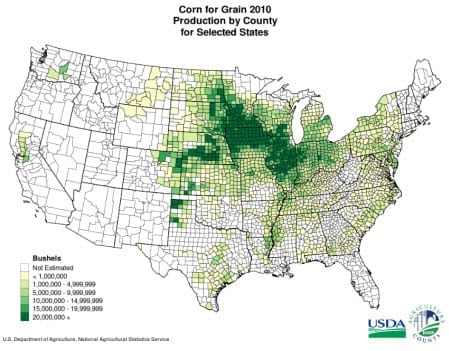A new report has suggested that farmers in the Corn Belt have been massively overcompensated.
The results of an analysis that was commissioned by the Environmental Working Group (EWG) have now been released in a report which suggests that the federal crop insurance program’s compensation to farmers in the Corn Belt who experienced the greatest devastation from the drought in 2012, had actually been too high by an estimated $7.8 billion.
The payouts from that disaster totaled approximately $14 billion, but the report said that far less would have sufficed.
 In fact, according to the figures in the report, if the crop insurance program had paid out $6.2 billion, then it would have been enough to support the revenue of the soybean and corn farmers whose crops were spoiled by the drought. This, according to the calculations of Bruce Babcock, an economist from Iowa State University. Broadening the analyses that had previously been performed for the EWG, Babcock noted in his most recent findings that the current support provided by the government is wasteful.
In fact, according to the figures in the report, if the crop insurance program had paid out $6.2 billion, then it would have been enough to support the revenue of the soybean and corn farmers whose crops were spoiled by the drought. This, according to the calculations of Bruce Babcock, an economist from Iowa State University. Broadening the analyses that had previously been performed for the EWG, Babcock noted in his most recent findings that the current support provided by the government is wasteful.
The report, entitled “Cutting Waste in the Crop Insurance Program”, suggested that cuts could easily be made.
In fact, according to Babcock, the reason that he is as certain as he is about the wastefulness of the current government support structure for farmers is that “it could be cut out with no harm to the public interest.”
The senior vice president for agriculture and natural resources at the EWG, Craig Cox, explained that the lawmakers responsible for creating the latest version of the farm bill have now been handed a “golden opportunity” for reducing the amount of spending that is being done wastefully. This could be done while still holding out a powerful safety net and simultaneously eliminating the budget cuts that would be harmful to both the environment and families in need. He added that “There is still time to seize that opportunity.”
The EWG has been a long time supporter of means-testing for subsidies in areas such as the federal crop insurance program, which would help to ensure that the most successful and largest farms would pay the most into the coverage.

